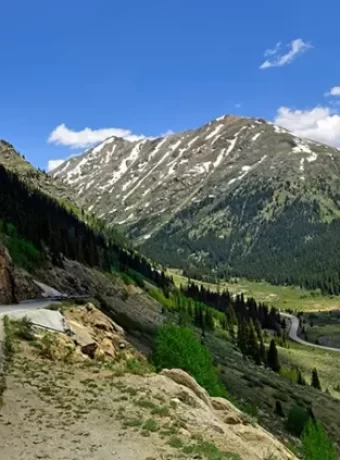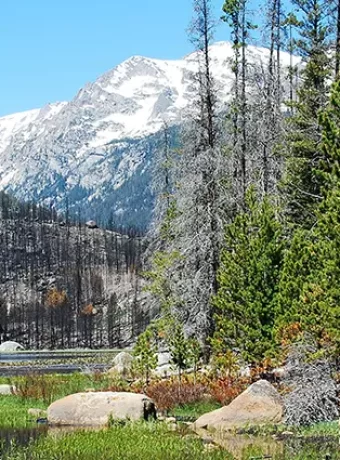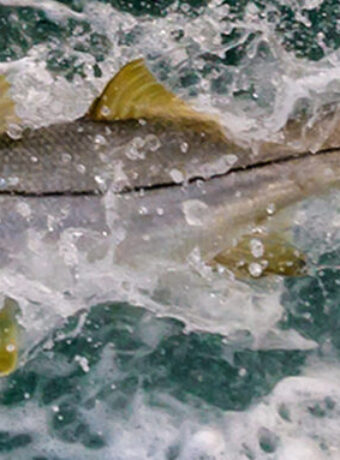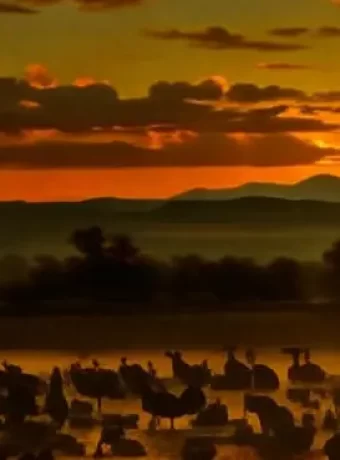Backpacking Adventure on the Continental Divide Trail in RMNP
Picture this scenario. You stand at the edge of a trailhead, your backpack feeling substantial, holding just enough gear to sustain you for days. Perhaps you snuck in a candy bar for a morale boost during your Backpacking Adventure on the Continental Divide Trail in Rocky Mountain National Park. Not just a candy bar forzen Marqurita’s on Dry Ice for the first night under the stars. The air, rich with the scent of pine and the promise of exploration, carries a faint whisper of “what have I gotten myself into?” This journey isn’t just any hike; it’s an experience that profoundly touches your spirit, a true test of endurance within the Rocky Mountains. Your legs will ache, but by the end, you’ll feel an incredible sense of accomplishment on this mountain trail. This path, a segment of the renowned Continental Divide Trail, winds through some of the most stunning scenery in the Rocky Mountain National, offering an unforgettable Backpacking Adventure on the Continental Divide Trail in Rocky Mountain National Park.
The Continental Divide Trail (CDT) is a national scenic treasure pathway, stretching an impressive 3,100 trail miles from Canada down to Mexico. Our focus, however, is on a particularly amazing section nestled within Rocky Mountain National Park, a gem of the national park system. The plan involves a 5-day divide loop, commencing at the Tonahutu-North Inlet Trailhead near Grand Lake. We’ll hike by serene alpine lakes and majestic waterfalls, camp under a Milky Way so brilliant it resembles cosmic city lights, and perhaps even try some fly fishing, a popular activity in this mountain national park. This CDT hike promises encounters with nature, maybe even a moose sighting (more on that exciting moment later.), culminating with a well-deserved hot shower and a tasty burger back in the gateway community of Grand Lake. Ready to begin this park hiking experience? Let’s get those boots on.

Table of Contents
Understanding the Continental Divide Trail in Rocky Mountain National Park
The Continental Divide National Scenic Trail (CDNST), often called the CDT, is one of the most significant long-distance trails in the United States. It stretches approximately 3,100 miles from Mexico to Canada, closely following the continental divide along the Rocky Mountains. The CDT is part of the “Triple Crown Trails” of American long-distance hiking, alongside the Pacific Crest Trail and the Appalachian Trail.
Within Rocky Mountain National Park, the CDT offers about 30 miles of spectacular high-altitude hiking. This segment, though relatively short compared to the entire trail, which even reaches near Yellowstone National Park, provides a concentrated dose of the challenges and rewards the full divide trail offers. It is a prized section for those undertaking a significant cdt hike or those just wanting a taste of this magnificent national scenic trail.
This part of the continental divide trail is special due to its stunning alpine environment, accessible yet challenging terrain, and the opportunity to experience a world-class trail within a beloved national park. Many hikers find the combination of well-maintained backcountry trail sections and the raw beauty of the divide national scenic trail to be particularly appealing. The experience here helps build appreciation for trail protection and trail completion efforts nationwide.
Day 1: Tonahutu-North Inlet Trailhead to North Inlet Falls Campsite
The Arrival: Finding the Trail and Starting to Sweat
You arrive at the Tonahutu-North Inlet Trailhead, possibly after a few navigational corrections, as GPS can be unreliable in mountainous terrain. This mountain trailhead serves as your entry to the Continental Divide on the west side of Rocky Mountain National Park, conveniently close to Grand Lake, a vibrant CDT gateway community. The parking lot buzzes with fellow adventurers; some appear to have stepped directly out of a gear catalog, while others, like myself, are likely double-checking their coffee supply before starting their trail hiking. Effective planning trip is crucial, which includes checking for any alerts from the backcountry office, especially since services can be limited if the office closed for the season or outside hours.
Day 1’s objective is clear: hike approximately 6.7 miles along the North Inlet Trail to the North Inlet Falls Campsite, establish camp, and then marvel at the star-filled sky. It feels like an audition for a nature documentary. The inlet trail begins gently, winding through lodgepole pines and picturesque meadows, a relatively easy start to our Rocky Mountain National Park backpacking journey. You might feel an urge to sing, but it’s wise not to get too comfortable; the Rocky Mountains have a habit of introducing an uphill challenge when you least expect it, reminding you that this is true mountain national park hiking.
The Hike: Big Views and a Waterfall Reward
The initial few trail miles serve as an excellent warm-up. The trail diligently follows North Inlet Creek, and you will cross several charming wooden bridges. You’ll pause for photographs, and perhaps quietly reconsider the weight of your backpack; that heavy iron skillet might have been better left at home. Around mile five, the trail hiking intensifies as it climbs through a denser forest, making your calf muscles announce their presence. Keep pushing forward; the vista ahead justifies every bit of effort on this continental divide loop.
At mile 6.7, the sound reaches you first, then the sight: North Inlet Falls. This stunning 30-foot cascade is nature’s applause for your perseverance on the divide trail. The campsite is conveniently located nearby, nestled in a wooded area with enough flat spots to make pitching your tent feel like a significant victory. Drop that heavy pack, take a deep breath, and congratulate yourself. You are officially a backpacker on the CDT hike.
Camp Life: Tents, Dinner, and a Sky Full of Stars
Setting up camp is akin to constructing an adult-sized fort. You stake your tent, filter water from the creek (a necessary precaution against giardia, an unwelcome souvenir), and then prepare some freeze-dried mac ‘n’ cheese. When this hungry, it tastes remarkably good. As the sun descends, the real spectacle begins: the Milky Way illuminates the sky, a breathtaking cosmic canvas. Lying on your sleeping pad, gazing upwards, you might momentarily contemplate quitting your job to live in the mountain national wilderness, respecting its beauty and cultural resources. You probably won’t, but it is a pleasant dream to have.
Day 2: Lakes Nokoni and Nanita—Fly Fishing and Exploring
Morning arrives with the fresh scent of pine and the promise of new sights within the mountain national forest. That first cup of camp coffee always tastes amazing, even if it is instant. It is strong enough to get you moving, even if your sleeping pad had a secret rock under it all night. After some oatmeal, or perhaps that strategically packed chocolate bar, it is time to get ready for a day trip.
Today’s adventure takes us to Lakes Nokoni and Nanita, pristine alpine destinations. These beautiful alpine lakes are about a 4-mile hike from your camp at North Inlet Falls. This means an 8-mile round-trip journey, so pack a light daypack with essentials: water, snacks, rain gear, and your fly-fishing rod if you brought one to try your luck in this part of Rocky Mountain.
The Hike to the Lakes: An Uphill Path to Beauty
The trail leading to Lakes Nokoni and Nanita is an upward climb. You will gain around 1,500 feet in elevation, which is a good workout for the legs as you venture deeper into the national park. The path winds through more forests, occasionally crossing open boulder fields where pikas might greet you with their characteristic squeaks. Keep an eye on the trail markers; sometimes they like to play hide-and-seek among the rocks.
About two miles into the hike, you will encounter a series of switchbacks. These can feel a bit challenging, but they are doing their job, helping you gain height efficiently on this creek trail spur. Then, just when you are wondering how much more uphill there is, Lake Nokoni appears, perhaps with views towards distant peaks like Mt Ida. It is a stunning sight, a deep blue gem nestled in a granite basin, sparkling invitingly. This is a great spot to take a breather and just admire the view, a true highlight of any park continental divide journey.
From Lake Nokoni, it is another half-mile push to reach Lake Nanita. Many hikers feel Nanita is even more secluded and peaceful than its sibling. It is surrounded by imposing granite cliffs and, depending on the season, framed by colorful wildflowers. It truly feels like a wild, untouched place, offering a serene escape. The kind of spot that makes you whisper, just because it feels so serene and remote from any parking lot buzz.
Fly Fishing: Casting Lines and Chasing Serenity
If you packed your fly rod, this is where it gets exciting. Both Lake Nokoni and Lake Nanita are known to hold cutthroat trout. These native fish can be spirited fighters, making for a fun angling experience. Find a good spot along the shoreline; carefully chosen access points minimize impact. Tie on a suitable dry fly; classics like a Parachute Adams or an Elk Hair Caddis often work well in these mountain lakes.
The fish in these high-elevation lakes might not be giants, but catching one here is incredibly rewarding. It is not just about the fish, though. It is about the rhythm of casting, the quiet focus, and being surrounded by such amazing scenery. If fishing is not your main interest, these lakes are perfect for exploring. You can wander along their shores, carefully dip your toes into the refreshingly cold water (it is snowmelt, after all.), or simply find a comfortable rock and absorb the mountain majesty. This day is about slowing down, letting the peace of the high country sink in, far from the concerns of whether the permit office might be office closed back in town.






